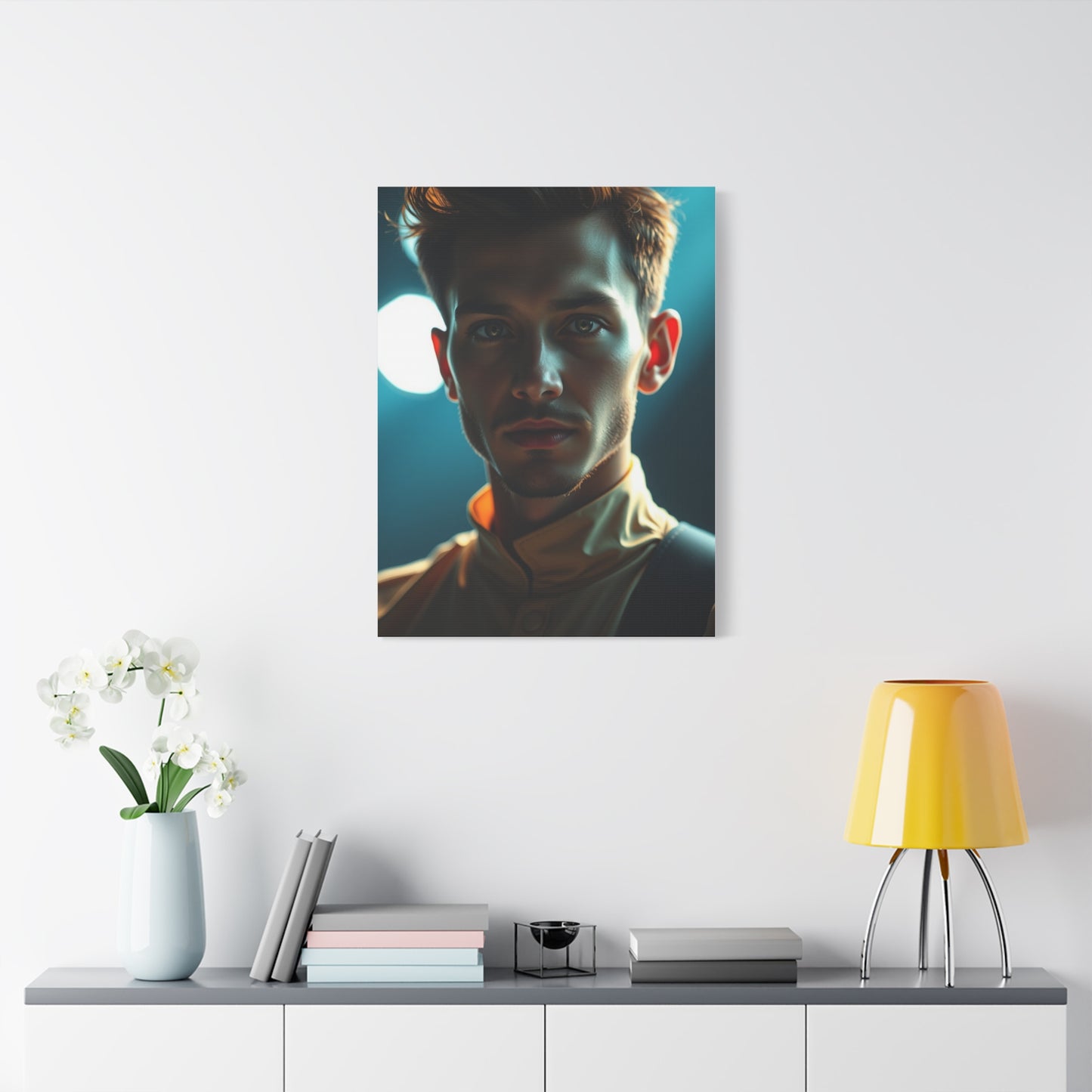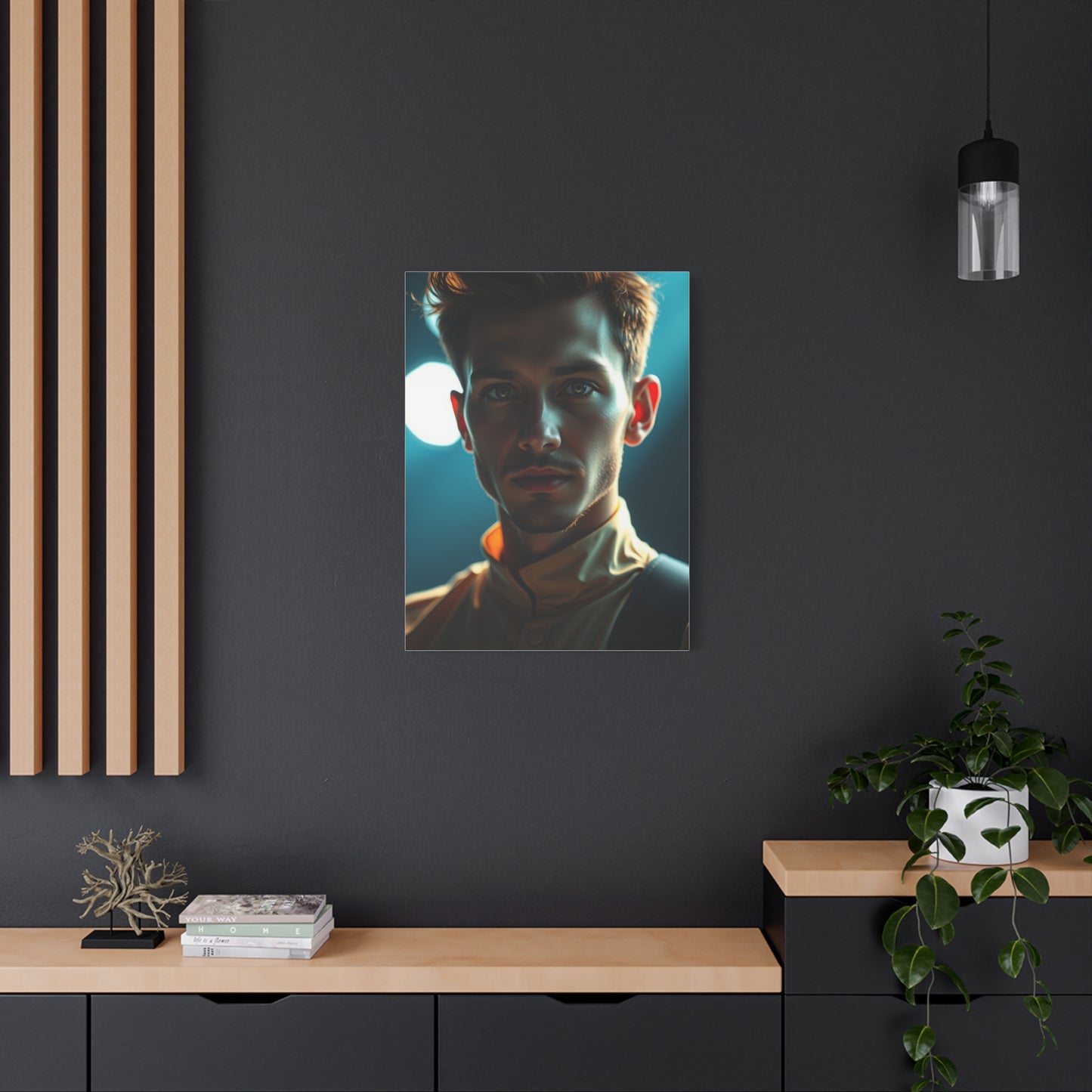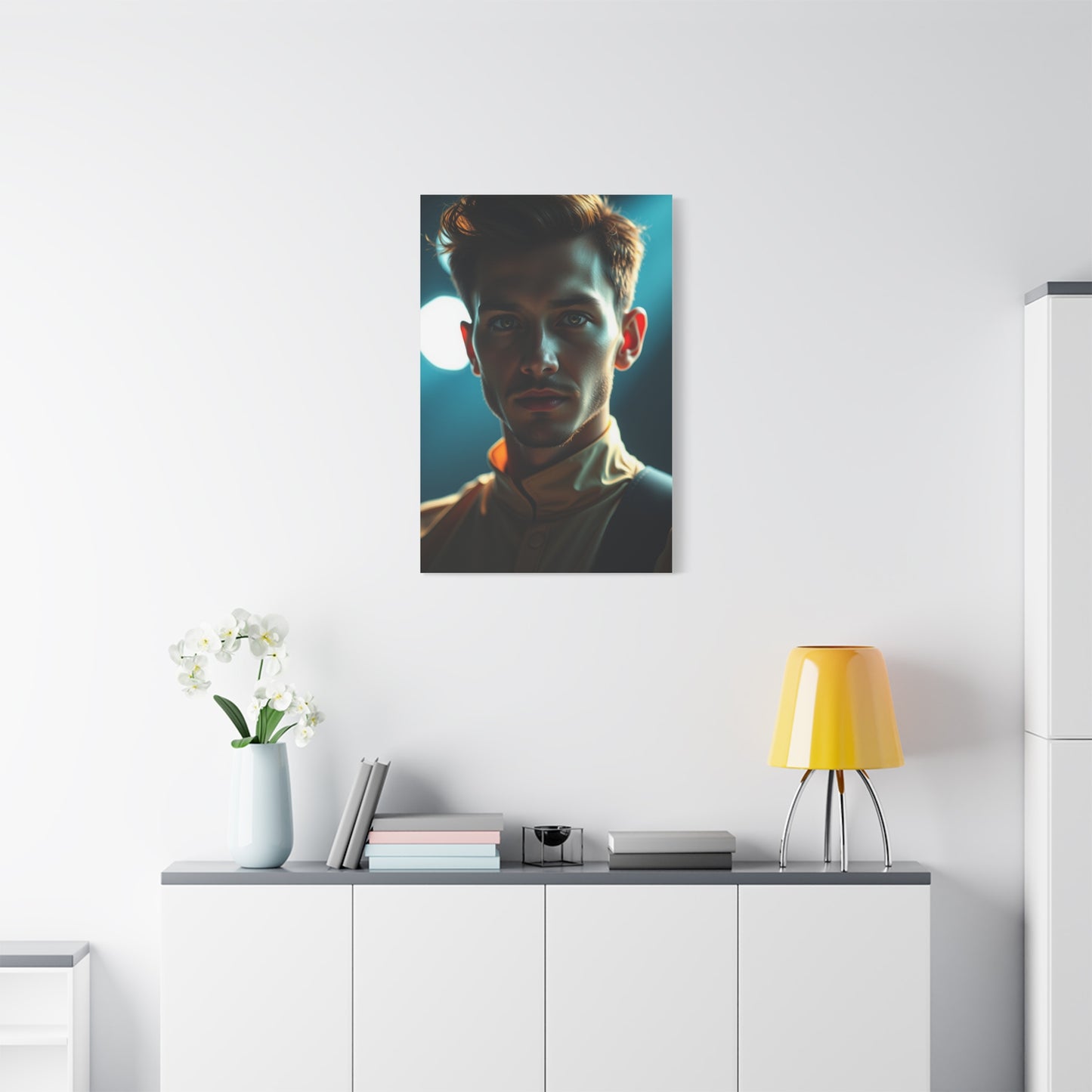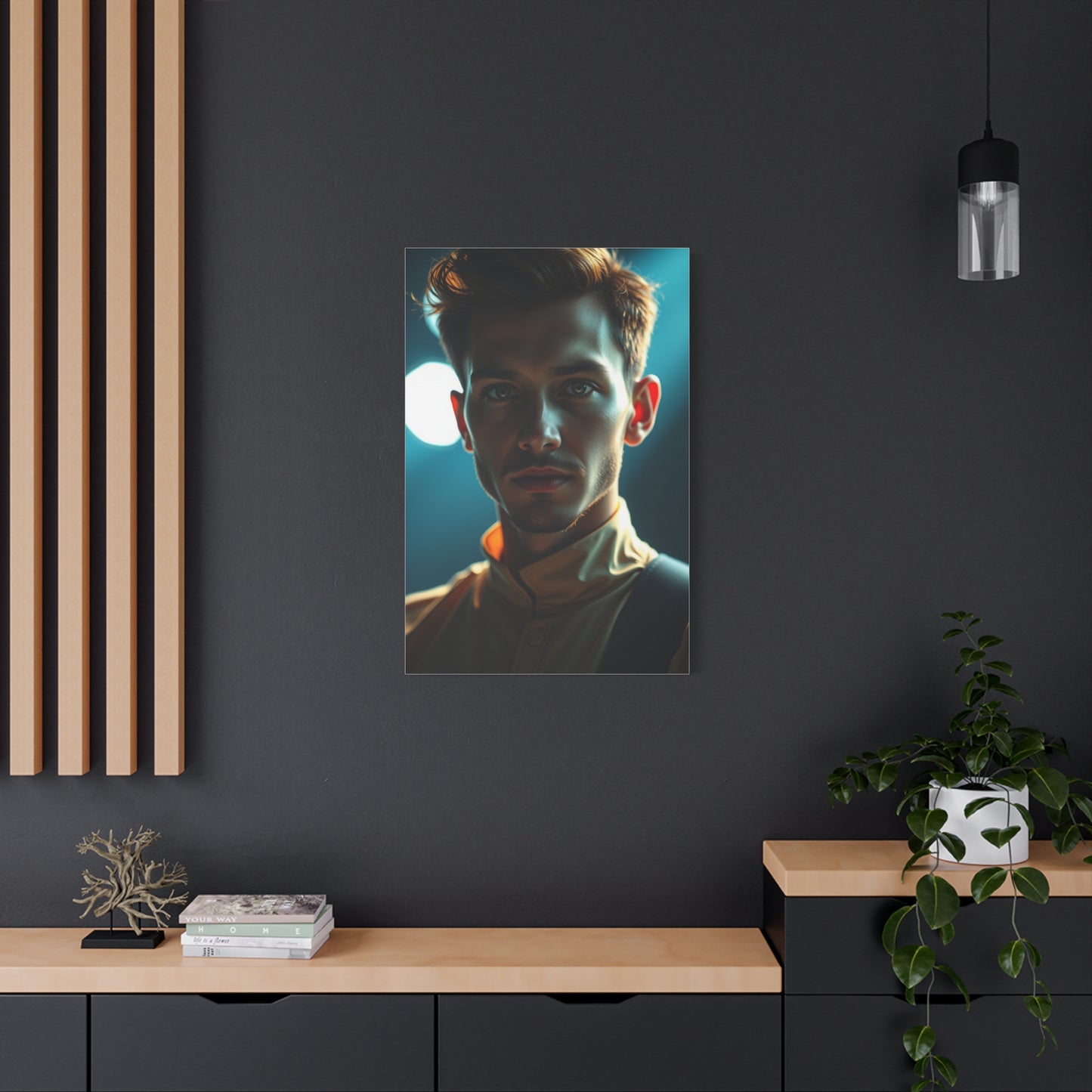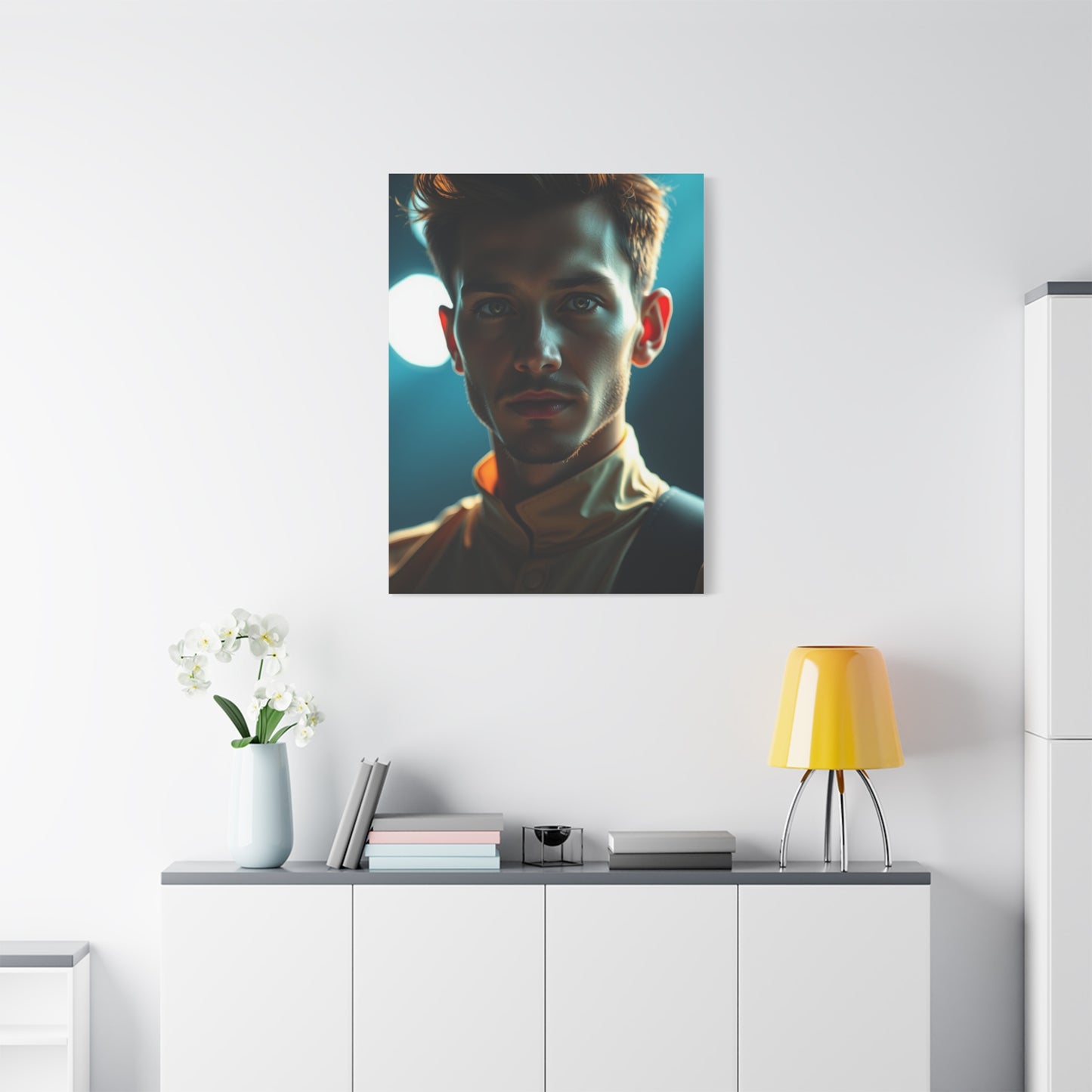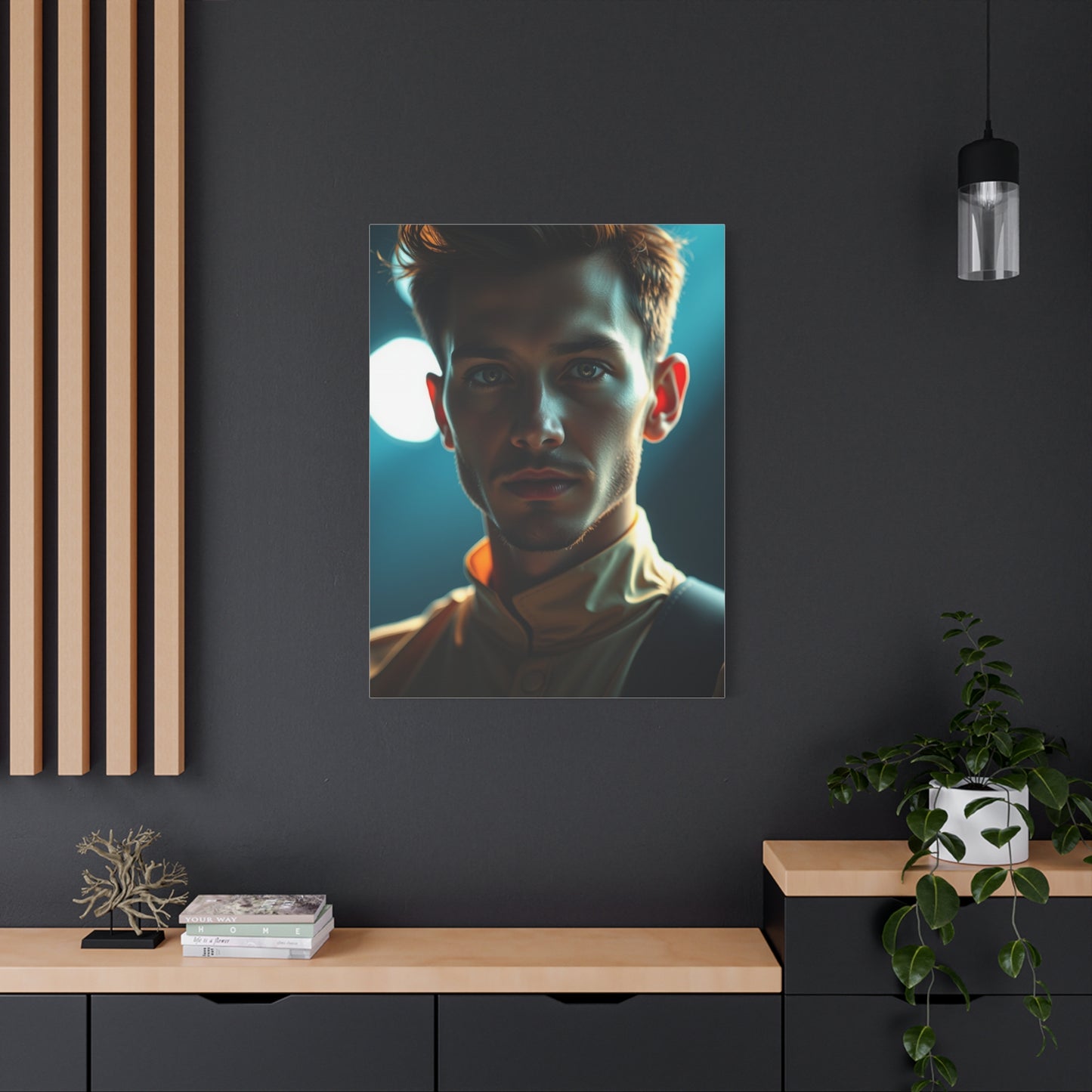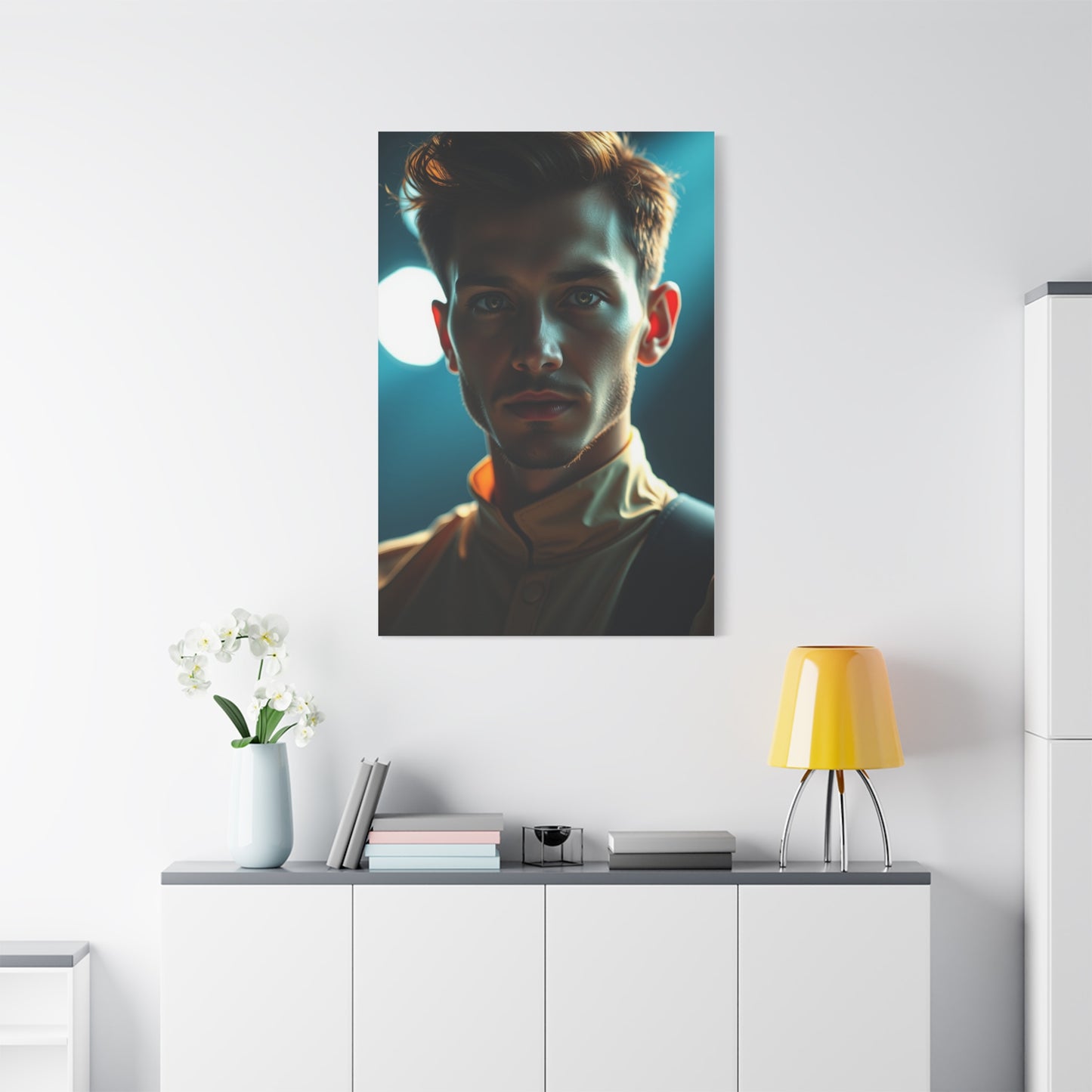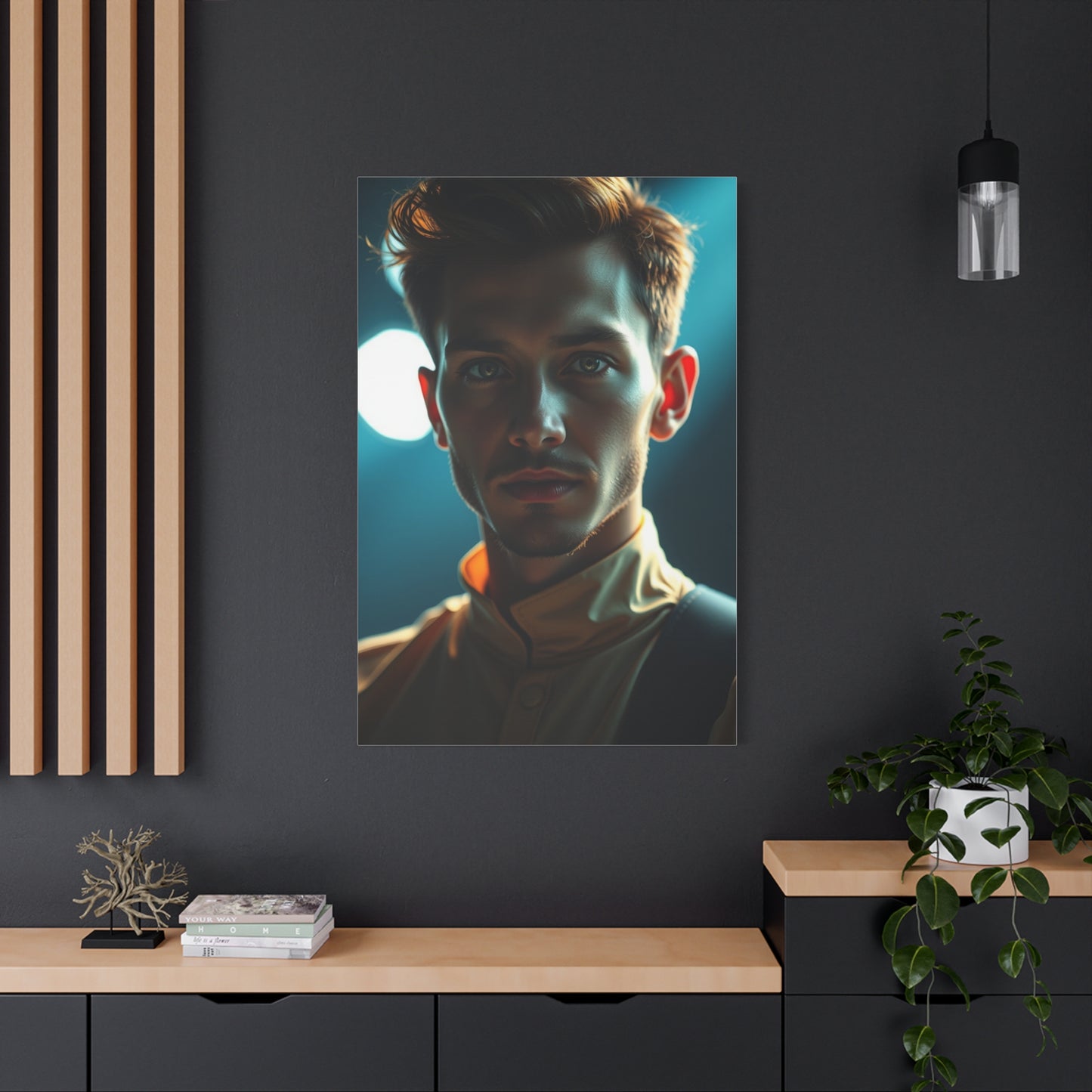The Future of Refined-Erudition-Artwork in a Post-Truth World
Refined erudition wall art represents a sophisticated fusion of intellectual depth and aesthetic excellence that transforms ordinary rooms into sanctuaries of learning and contemplation. This distinctive artistic movement draws inspiration from centuries of scholarly tradition, incorporating elements of classical philosophy, literature, science, and humanities into visually stunning compositions that speak to the educated mind and cultivated spirit.
The concept of refined erudition artwork emerges from the Renaissance tradition of studiolo, private study chambers adorned with symbols of knowledge and learning. Modern interpretations of this concept have evolved to encompass various artistic mediums, from traditional paintings and prints to contemporary digital compositions and mixed-media installations. These pieces serve not merely as decorative elements but as conversation starters, sources of inspiration, and reminders of humanity's greatest intellectual achievements.
Contemporary refined erudition wall art often features intricate symbolic languages that reference mathematical theorems, philosophical concepts, literary quotations, and scientific discoveries. Artists working in this genre demonstrate exceptional scholarship themselves, spending considerable time researching historical contexts, symbolic meanings, and cultural significance of their chosen subjects. The resulting artworks become vessels of knowledge transmission, allowing viewers to engage with complex ideas through visual representation.
The aesthetic philosophy behind refined erudition artwork emphasizes the harmony between form and content, where visual beauty serves to enhance rather than overshadow intellectual substance. This approach creates pieces that function effectively in both academic and domestic environments, appealing to individuals who value continuous learning and intellectual growth. The careful balance between accessibility and sophistication ensures that these artworks remain engaging to diverse audiences while maintaining their scholarly integrity.
Modern collectors of refined erudition wall art often seek pieces that reflect their personal intellectual interests or professional fields of expertise. A mathematician might gravitate toward artwork featuring geometric patterns derived from complex equations, while a literature professor might prefer pieces incorporating typographic elements from classical texts. This personalization aspect has driven significant innovation in the field, with artists developing increasingly specialized approaches to different academic disciplines.
The production of refined erudition artwork requires extensive research and collaboration between artists and subject matter experts. Many contemporary pieces involve partnerships with universities, museums, and scholarly institutions to ensure accuracy and authenticity in their representations of complex concepts. This collaborative approach has enriched the artistic process while creating valuable connections between academic and creative communities.
Foundations and Scholarly Traditions in Wall Art
The tradition of scholarly wall art traces its origins to ancient civilizations where educated elites adorned their residences with symbols of learning and intellectual achievement. Egyptian tomb paintings frequently depicted scribes and scholars surrounded by hieroglyphic texts, while Greek and Roman homes featured frescoes celebrating philosophical and literary themes. These early examples established the precedent for using visual art as a means of expressing and preserving intellectual culture.
During the medieval period, illuminated manuscripts and religious art dominated scholarly visual expression, with monastery scriptoriums producing elaborate decorative elements that combined theological scholarship with artistic excellence. The emergence of universities in the twelfth and thirteenth centuries created new contexts for scholarly art, as academic institutions began commissioning works that celebrated learning and knowledge acquisition. These early university commissions often featured allegorical representations of the liberal arts, personified as elegant female figures surrounded by symbols of their respective disciplines.
The Renaissance period marked a revolutionary expansion in scholarly wall art, with the development of perspective, realistic portraiture, and complex symbolic systems that could convey sophisticated intellectual concepts. Artists like Raphael created masterpieces such as "The School of Athens," which became paradigmatic examples of how visual art could celebrate and preserve philosophical traditions. Private collectors and wealthy patrons began commissioning portraits that included scholarly attributes, establishing the tradition of depicting intellectual achievement through material symbols.
The invention of printing technology in the fifteenth century democratized access to scholarly imagery, allowing reproductions of famous academic artworks to reach broader audiences. This technological advancement contributed to the standardization of certain iconographic elements in scholarly art, creating a shared visual vocabulary that transcended national and linguistic boundaries. Books, scrolls, globes, mathematical instruments, and astronomical devices became universally recognized symbols of learning and erudition.
The Enlightenment period witnessed unprecedented growth in scholarly wall art as scientific discoveries and philosophical innovations provided new subject matter for artistic exploration. Artists began incorporating contemporary scientific instruments, anatomical studies, and mathematical diagrams into their compositions, creating works that celebrated both artistic skill and intellectual achievement. The establishment of scientific academies and learned societies created institutional markets for such artwork, further encouraging its development.
The nineteenth century brought photography and lithography, revolutionizing the production and distribution of scholarly artwork. These new technologies allowed for precise reproduction of scientific illustrations, historical documents, and academic portraits, making scholarly imagery more accessible to middle-class professionals and educated individuals. The growth of public education during this period created increased demand for educational artwork in schools, libraries, and civic institutions.
Contemporary Movements in Refined Erudition Artwork
Modern refined erudition artwork encompasses diverse stylistic approaches and thematic concerns that reflect contemporary intellectual discourse and academic developments. Digital technology has revolutionized the field, enabling artists to create complex interactive pieces that respond to viewer engagement and incorporate real-time data from scientific research or literary databases. These technological innovations have expanded the possibilities for scholarly art while maintaining its essential educational and inspirational functions.
Contemporary artists working in refined erudition often draw inspiration from interdisciplinary research and cross-cultural academic collaboration. Globalization has introduced non-Western scholarly traditions into the artistic vocabulary, creating hybrid forms that combine Eastern philosophical concepts with Western artistic techniques. This cultural synthesis has produced innovative artworks that appeal to international audiences while honoring diverse intellectual traditions.
The environmental movement has significantly influenced contemporary refined erudition artwork, with many pieces incorporating ecological themes, sustainability concepts, and climate science data. Artists working in this area often collaborate with environmental scientists and policy researchers to create visually compelling representations of complex environmental challenges. These works serve dual purposes as artistic expressions and educational tools for raising awareness about pressing global issues.
Feminist scholarship has contributed important perspectives to refined erudition artwork, with artists highlighting previously overlooked contributions of women scholars and scientists throughout history. These revisionist approaches have generated powerful artistic statements that challenge traditional canonization processes while celebrating intellectual diversity. The integration of gender studies perspectives has enriched the field and attracted new audiences to scholarly art.
Postmodern and deconstructionist influences have created experimental approaches to refined erudition artwork that question traditional assumptions about knowledge, authority, and representation. These critical perspectives have generated provocative pieces that invite viewers to examine their own relationships with learning and intellectual culture. While controversial, these approaches have stimulated important discussions about the role of art in knowledge production and transmission.
The emergence of digital humanities has created new opportunities for artistic collaboration between technologists and humanists. Data visualization techniques have been adapted for artistic purposes, creating stunning representations of large-scale literary, historical, or philosophical datasets. These projects demonstrate the potential for refined erudition artwork to contribute directly to scholarly research while maintaining its aesthetic and cultural functions.
Classical Elements and Symbolic Languages in Wall Art
The vocabulary of symbols employed in refined erudition wall art draws from centuries of intellectual tradition, creating a rich and complex language that communicates sophisticated ideas through visual means. Classical elements such as books, scrolls, quills, and inkwells serve as universal signifiers of scholarship and learning, while more specialized instruments like astrolabes, microscopes, and mathematical compasses indicate specific fields of study. Understanding these symbolic languages enhances appreciation of refined erudition artwork and enables deeper engagement with its intellectual content.
Geometric patterns and mathematical relationships form fundamental components of scholarly symbolic systems, with artists incorporating golden ratios, Fibonacci sequences, and complex geometric constructions into their compositions. These mathematical elements serve both aesthetic and intellectual functions, creating visually pleasing arrangements while celebrating the beauty and universality of mathematical principles. The use of geometric symbolism connects contemporary refined erudition artwork to ancient traditions of sacred geometry and philosophical mathematics.
Literary symbolism plays equally important roles in refined erudition wall art, with artists incorporating typographic elements, calligraphic styles, and textual fragments from significant literary works. The choice of fonts, writing systems, and textual excerpts communicates specific cultural and intellectual associations, allowing artists to reference particular literary traditions or philosophical schools. This textual integration creates multilayered compositions that reward careful reading and scholarly interpretation.
Color symbolism in refined erudition artwork often draws from historical associations and cultural traditions related to learning and intellectual achievement. Deep blues and purples traditionally associated with wisdom and contemplation appear frequently, while gold and silver elements reference the precious nature of knowledge and learning. Earth tones and natural colors connect scholarly pursuits to broader cosmic and environmental contexts, emphasizing the relationship between human knowledge and natural phenomena.
Allegorical figures and personifications provide another important category of symbolic elements in refined erudition wall art. Classical representations of the liberal arts, sciences, and philosophical virtues offer artists established iconographic traditions while allowing for contemporary reinterpretation and updating. Modern artists often create original allegorical figures that represent emerging fields of study or contemporary intellectual concerns, extending traditional symbolic vocabularies in innovative directions.
Architectural elements in refined erudition artwork often reference famous libraries, universities, and scholarly institutions, creating associations with specific intellectual traditions and educational philosophies. Gothic arches, classical columns, and Renaissance facades communicate different approaches to learning and knowledge organization, while modern architectural elements suggest contemporary educational innovations and technological integration.
Intellectual Aesthetic Appreciation
The psychological mechanisms underlying appreciation of refined erudition wall art involve complex cognitive processes that combine aesthetic perception with intellectual recognition and emotional response. Research in neuroaesthetics has revealed that viewing intellectually stimulating artwork activates brain regions associated with both visual processing and higher-order thinking, creating unique neural patterns that distinguish scholarly art appreciation from other forms of aesthetic experience.
Cognitive psychology research indicates that individuals with extensive educational backgrounds and diverse intellectual interests demonstrate enhanced appreciation for refined erudition artwork, suggesting that prior knowledge and learning experiences significantly influence aesthetic responses. This relationship between education and artistic appreciation creates positive feedback loops where exposure to scholarly art encourages further learning, which in turn enhances future artistic appreciation and engagement.
The phenomenon of intellectual recognition plays crucial roles in refined erudition art appreciation, as viewers experience satisfaction and pleasure when identifying familiar symbols, references, or concepts within artistic compositions. This recognition process creates feelings of competence and belonging within scholarly communities, reinforcing intellectual identity and encouraging continued engagement with educational content. Artists working in this field carefully calibrate the accessibility of their references to maximize recognition while maintaining appropriate levels of challenge.
Emotional responses to refined erudition artwork often involve feelings of inspiration, aspiration, and intellectual humility that motivate continued learning and self-improvement. The contemplative mood induced by scholarly art creates optimal conditions for reflection and deep thinking, making such pieces valuable additions to study areas, libraries, and other learning environments. The aspirational qualities of refined erudition art help maintain motivation during challenging intellectual pursuits.
Social psychology research reveals that displaying refined erudition artwork serves important identity signaling functions, communicating intellectual values and scholarly commitments to others. This social dimension creates additional layers of meaning and satisfaction for collectors and viewers, who derive pleasure from participating in broader intellectual communities through their aesthetic choices. The communal aspects of scholarly art appreciation foster connections between like-minded individuals and institutions.
The therapeutic potential of refined erudition artwork has attracted attention from art therapists and educational psychologists who recognize its capacity to reduce anxiety, improve focus, and enhance overall well-being among students and academics. The combination of visual beauty and intellectual stimulation creates calming yet engaging experiences that support mental health and cognitive function in educational and professional environments.
Academic Disciplines Represented in Refined Erudition Wall Art
Refined erudition wall art encompasses representations of virtually every academic discipline, with artists developing specialized approaches to visualizing the unique characteristics and methodologies of different fields of study. The diversity of disciplinary representation reflects the comprehensive nature of human knowledge while allowing collectors to create personalized environments that reflect their specific intellectual interests and professional commitments.
Mathematical artwork within the refined erudition tradition often features elegant visualizations of complex equations, geometric proofs, and statistical relationships that reveal the underlying beauty of numerical and logical systems. Artists working in mathematical themes frequently collaborate with professional mathematicians to ensure accuracy while developing innovative ways to represent abstract concepts through visual means. These collaborations have produced stunning pieces that make advanced mathematics accessible to broader audiences while maintaining mathematical rigor and precision.
Scientific disciplines contribute rich subject matter for refined erudition wall art, with representations ranging from detailed anatomical illustrations and botanical studies to astronomical charts and molecular diagrams. The precision required for scientific accuracy creates unique aesthetic challenges and opportunities, as artists must balance educational value with artistic expression. Contemporary scientific artwork often incorporates data visualization techniques and digital imaging technologies to create dynamic representations of ongoing research and discovery.
Philosophical themes in refined erudition artwork often employ symbolic and allegorical approaches to represent abstract concepts and logical arguments that resist direct visual representation. Artists working in philosophical subjects frequently draw inspiration from historical philosophical texts and traditional iconographic systems while developing contemporary approaches to representing modern philosophical discourse. These works serve as meditation aids and discussion starters for individuals engaged in philosophical study and reflection.
Literary representations in refined erudition wall art encompass diverse approaches from straightforward textual displays to complex visual interpretations of narrative structures, character relationships, and thematic content. Typography and calligraphy play important roles in literary artwork, with artists exploring relationships between textual content and visual form. Contemporary literary art often incorporates digital text analysis and visualization techniques to reveal hidden patterns and structures within literary works.
Historical artwork within the refined erudition tradition focuses on representing significant events, figures, and periods in ways that illuminate broader historical patterns and processes. These works often incorporate primary source documents, period artifacts, and architectural elements to create immersive historical experiences. The educational value of historical artwork makes it particularly popular in academic institutions and museums where it supports formal educational programming.
Language and linguistic studies provide fascinating subject matter for refined erudition wall art, with artists exploring relationships between different writing systems, grammatical structures, and cultural linguistic patterns. Multilingual artworks celebrate linguistic diversity while highlighting universal aspects of human communication. The visual representation of language creates unique opportunities for artistic expression while supporting language learning and cultural understanding.
Materials in Contemporary Scholarly Art
Contemporary refined erudition wall art employs diverse techniques and materials that reflect both traditional artistic practices and cutting-edge technological innovations. The choice of techniques and materials significantly influences the aesthetic impact and educational effectiveness of scholarly artwork, with artists carefully selecting approaches that best serve their conceptual and communicative goals.
Traditional painting techniques continue to play important roles in refined erudition artwork, with many artists employing oil paints, watercolors, and tempera to create detailed representations of scholarly subjects. The precision and control offered by traditional painting media make them particularly suitable for scientific illustrations, mathematical diagrams, and other subjects requiring high levels of accuracy and detail. Contemporary artists often combine traditional techniques with modern materials and tools to achieve unique effects and textures.
Printmaking techniques including etching, lithography, and screen printing provide cost-effective methods for producing multiple copies of refined erudition artwork while maintaining high quality and artistic integrity. The historical association between printmaking and book illustration creates natural connections between these techniques and scholarly art traditions. Contemporary printmakers often experiment with digital technologies and hybrid approaches that combine traditional and modern printing methods.
Digital art technologies have revolutionized refined erudition artwork production, enabling artists to create complex interactive pieces, animations, and multimedia installations that respond to viewer input and incorporate real-time data. Digital tools allow for precise manipulation of text, images, and symbolic elements while facilitating collaboration between artists and scholars located in different geographic regions. The flexibility of digital media makes it particularly suitable for representing dynamic and evolving scholarly content.
Mixed media approaches combine diverse materials and techniques to create richly textured artworks that engage multiple senses and create layered meanings. Collage techniques allow artists to incorporate authentic historical documents, scientific diagrams, and scholarly texts into their compositions, creating direct connections between artistic representation and primary source materials. Three-dimensional elements add sculptural qualities to wall art while providing additional surfaces for textual and symbolic content.
Experimental techniques including photo transfer, digital printing on unusual substrates, and incorporation of electronic components create innovative approaches to refined erudition artwork that push traditional boundaries while maintaining educational and aesthetic functions. Artists working with experimental techniques often draw inspiration from scientific research methods and technological innovations in other fields, creating cross-disciplinary fertilization that enriches both artistic and scholarly communities.
Conservation considerations play increasingly important roles in contemporary refined erudition artwork production, with artists selecting materials and techniques that ensure long-term stability and preservation. The educational value of scholarly artwork makes its preservation particularly important for future generations of students and researchers. Contemporary conservation science provides artists with improved materials and techniques that balance aesthetic quality with longevity and stability.
Curatorial Approaches to Refined Erudition Collections
Effective curation of refined erudition wall art collections requires sophisticated understanding of both artistic and educational principles, with curators developing specialized expertise in scholarly subject matter alongside traditional art historical knowledge. The dual nature of refined erudition artwork as both aesthetic objects and educational resources creates unique challenges and opportunities for curatorial practice that distinguish scholarly art collections from traditional art exhibitions.
Thematic organization represents one important approach to curating refined erudition collections, with curators developing coherent intellectual narratives that connect individual artworks through shared scholarly themes or methodological approaches. These thematic exhibitions create immersive educational experiences that demonstrate relationships between different fields of study while highlighting the interdisciplinary nature of contemporary scholarship. Successful thematic curation requires extensive collaboration between curators, artists, and subject matter experts to ensure accuracy and accessibility.
Chronological approaches to refined erudition curation trace the historical development of particular fields of study or artistic traditions, creating educational narratives that demonstrate how knowledge and understanding evolve over time. These chronological exhibitions often incorporate historical documents, scientific instruments, and other artifacts alongside contemporary artwork to create comprehensive educational experiences. The integration of historical and contemporary elements helps viewers understand continuities and changes in scholarly traditions.
Interdisciplinary curation explores connections between different academic fields and demonstrates how contemporary scholarship increasingly crosses traditional disciplinary boundaries. These exhibitions often feature collaborative artworks created by teams of artists and scholars from different fields, highlighting the collaborative nature of modern research and knowledge production. Interdisciplinary approaches appeal to diverse audiences while promoting broader understanding of complex contemporary issues.
Comparative approaches to refined erudition curation examine how different cultures and traditions approach similar scholarly questions, creating opportunities for cross-cultural learning and understanding. These exhibitions often feature artwork representing diverse intellectual traditions alongside explanatory materials that highlight similarities and differences in approaches to knowledge and learning. Comparative curation promotes cultural understanding while demonstrating the universal human commitment to learning and discovery.
Interactive curation incorporates participatory elements that encourage viewer engagement with scholarly content through hands-on activities, digital interfaces, and collaborative projects. These interactive approaches transform passive viewing experiences into active learning opportunities while maintaining the aesthetic integrity of refined erudition artwork. The integration of interactive elements appeals particularly to younger audiences while supporting diverse learning styles and preferences.
Educational programming associated with refined erudition exhibitions often includes lectures, workshops, and discussions that connect artistic content to broader scholarly and cultural contexts. These programs create opportunities for direct interaction between viewers, artists, and scholars while extending the educational impact of exhibitions beyond the physical gallery environment. Successful educational programming requires careful coordination between curatorial, educational, and scholarly communities.
The Role of Technology in Modern Scholarly Wall Art
Digital technologies have fundamentally transformed the creation, distribution, and appreciation of refined erudition wall art, enabling artists to develop innovative approaches to representing complex scholarly content while reaching broader audiences through digital platforms and virtual exhibitions. The integration of technology into scholarly art practice reflects broader trends toward digitization in academic and cultural institutions while opening new possibilities for artistic expression and educational outreach.
Computer-aided design software allows artists to create precise geometric constructions, complex mathematical visualizations, and detailed scientific diagrams that would be difficult or impossible to produce using traditional techniques alone. These digital tools enable iterative design processes that allow artists to experiment with different approaches while maintaining accuracy and precision in their representations of scholarly content. The flexibility of digital design tools supports collaboration between artists and scholars throughout the creative process.
Data visualization technologies enable artists to transform abstract datasets and research findings into visually compelling artworks that make complex information accessible to diverse audiences. These approaches often incorporate real-time data feeds that create dynamic artworks that evolve in response to ongoing research and discovery. The integration of data visualization techniques into refined erudition artwork creates new possibilities for representing the active nature of scholarly inquiry and knowledge production.
Virtual reality and augmented reality technologies create immersive experiences that allow viewers to explore scholarly content in three-dimensional environments that simulate historical settings, scientific phenomena, or abstract conceptual relationships. These technologies enable new forms of educational engagement that combine visual, spatial, and interactive elements to create comprehensive learning experiences. The development of VR and AR applications for refined erudition artwork represents an emerging field with significant potential for educational innovation.
Digital printing technologies enable high-quality reproduction of refined erudition artwork at reasonable costs while maintaining color accuracy and detail that rival traditional printing methods. These technologies democratize access to scholarly artwork while enabling artists to experiment with unusual substrates and large-scale formats that extend the possibilities for artistic expression. Digital printing also facilitates customization and personalization of artwork to meet specific client needs and preferences.
Online platforms and digital galleries create new opportunities for distributing and appreciating refined erudition artwork that transcend geographic and institutional boundaries. These platforms enable global communities of artists, scholars, and collectors to share resources and collaborate on projects while providing educational institutions with access to diverse collections of scholarly artwork. The development of online platforms specifically designed for educational art creates specialized communities that support the growth and development of the field.
Artificial intelligence and machine learning technologies are beginning to influence refined erudition artwork through automated design assistance, pattern recognition, and content generation capabilities that augment human artistic creativity. While controversial, these technological developments offer potential benefits for educational accessibility and cross-cultural collaboration in scholarly art production. The ethical and aesthetic implications of AI integration in refined erudition artwork continue to generate important discussions within artistic and scholarly communities.
Cultural Variations in Scholarly Artistic Traditions
Global perspectives on refined erudition wall art reveal significant cultural variations in approaches to representing knowledge, learning, and scholarly achievement through visual means. These cultural differences reflect diverse philosophical traditions, educational systems, and aesthetic preferences that have developed independently across different civilizations while sharing common commitments to preserving and transmitting intellectual culture through artistic expression.
East Asian scholarly art traditions emphasize calligraphy, landscape painting, and symbolic representations that integrate aesthetic beauty with philosophical and literary content. Chinese scholarly painting often incorporates poetic texts, philosophical quotations, and symbolic elements drawn from Confucian, Taoist, and Buddhist traditions. The integration of text and image in East Asian scholarly art creates unified compositions that serve both contemplative and educational functions while demonstrating the close relationship between artistic and intellectual achievement.
Islamic scholarly art traditions feature complex geometric patterns, calligraphic designs, and architectural elements that reflect mathematical and philosophical principles underlying Islamic civilization. The prohibition against figurative representation in religious contexts has encouraged the development of sophisticated abstract and geometric approaches to scholarly art that create visually stunning compositions while maintaining spiritual and intellectual significance. Contemporary Islamic artists working in refined erudition often draw inspiration from historical mathematical and scientific achievements of Islamic civilization.
European scholarly art traditions encompass diverse regional approaches that reflect different cultural and educational philosophies while sharing common roots in classical and medieval intellectual culture. Northern European traditions often emphasize detailed scientific illustration and precise technical drawing, while Mediterranean traditions incorporate more allegorical and symbolic approaches. The diversity of European approaches to scholarly art reflects the complex cultural and political history of the continent while demonstrating shared commitments to learning and intellectual achievement.
Indigenous knowledge traditions contribute unique perspectives to contemporary refined erudition artwork through incorporation of traditional ecological knowledge, oral history, and ceremonial practices that represent alternative approaches to understanding and representing natural and cultural phenomena. These perspectives challenge Western academic assumptions while enriching contemporary scholarly art through introduction of diverse ways of knowing and representing knowledge. The integration of indigenous knowledge traditions creates opportunities for decolonizing scholarly art while promoting cultural understanding and respect.
Contemporary globalization has created hybrid forms of refined erudition artwork that combine elements from different cultural traditions while addressing universal themes and concerns. These cross-cultural syntheses create innovative artistic approaches that appeal to international audiences while respecting cultural specificities and avoiding superficial appropriation. The development of global scholarly art communities through digital technologies facilitates these cross-cultural collaborations while promoting mutual understanding and respect.
Postcolonial perspectives on refined erudition artwork highlight the need to address historical inequalities and representation gaps in traditional scholarly art canons. These critical approaches have generated important discussions about whose knowledge gets represented in scholarly art and how different cultural contributions to human understanding can be appropriately acknowledged and celebrated. The decolonization of scholarly art represents an ongoing process that continues to influence contemporary artistic and curatorial practice.
Market Dynamics and Collecting Patterns in Academic Art
The market for refined erudition wall art operates according to unique dynamics that reflect both traditional art market principles and specialized factors related to educational value, scholarly accuracy, and institutional demand. Understanding these market dynamics provides important insights for artists, collectors, and institutions interested in engaging with scholarly art while supporting its continued development and accessibility.
Institutional collectors including universities, libraries, museums, and research centers represent significant segments of the refined erudition art market, with these organizations seeking artwork that supports their educational missions while enhancing their physical environments. Institutional purchasing decisions often involve committees that include both art and academic specialists, creating more complex evaluation processes than typical art market transactions. The educational value of scholarly artwork often weighs heavily in institutional purchasing decisions alongside aesthetic considerations.
Private collectors of refined erudition artwork often include academics, professionals, and educated individuals who seek to create personal environments that reflect their intellectual interests and values. These collectors frequently focus on specific subject areas or themes that relate to their professional expertise or personal passions, creating specialized collections that demonstrate deep knowledge and appreciation for particular scholarly traditions. The personal nature of scholarly art collecting creates strong emotional attachments that influence market dynamics.
Pricing structures for refined erudition artwork reflect various factors including artistic reputation, scholarly accuracy, rarity, and educational value that may not apply to other art market segments. Original research required for accurate scholarly representation often increases production costs while adding educational value that justifies higher prices for institutional and serious private collectors. Limited edition prints and reproductions provide more accessible price points while maintaining educational and aesthetic quality.
Geographic variations in refined erudition art markets reflect different cultural attitudes toward learning and education as well as varying levels of institutional support for scholarly art. Markets in regions with strong educational traditions and well-funded academic institutions typically demonstrate higher demand and more sophisticated appreciation for refined erudition artwork. International art fairs and exhibitions provide opportunities for cross-cultural exchange and market development in regions with emerging interest in scholarly art.
Digital marketplaces have transformed the distribution and discovery of refined erudition artwork by enabling direct connections between artists and collectors while providing access to global markets. Online platforms specializing in educational and scholarly art create targeted communities that support both established and emerging artists working in this field. The digital transformation of art markets has democratized access while creating new challenges related to authentication and quality assessment.
Investment potential in refined erudition artwork reflects both traditional art market factors and unique characteristics related to educational trends and institutional demand. The growing emphasis on STEAM education and interdisciplinary learning has increased institutional demand for scholarly artwork while creating new collector interest. Long-term appreciation potential depends on factors including artistic quality, scholarly significance, and cultural relevance that may differ from traditional art investment criteria.
Educational Applications and Institutional Integration
Educational institutions represent primary contexts for refined erudition wall art installation and appreciation, with these environments providing ideal settings for combining aesthetic appreciation with educational objectives. The integration of scholarly artwork into educational environments requires careful consideration of pedagogical goals, audience characteristics, and institutional cultures while maintaining artistic integrity and aesthetic quality.
University installations of refined erudition artwork often focus on creating inspiring environments for advanced study and research while celebrating the intellectual achievements of particular disciplines or institutions. Faculty offices, departmental common areas, and library study spaces provide appropriate contexts for scholarly artwork that supports the contemplative and intellectual activities that occur in these environments. The permanence of institutional installations allows for long-term educational impact while creating distinctive institutional identities.
Primary and secondary school applications of refined erudition artwork require careful adaptation to age-appropriate content and educational objectives while maintaining the inspirational and motivational qualities that make scholarly art effective. Simplified representations of complex concepts and engaging visual presentations help introduce younger students to advanced ideas while encouraging continued learning and intellectual development. School installations often incorporate interactive elements that encourage student engagement and participation.
Museum and library installations of refined erudition artwork create public educational opportunities that extend beyond formal educational institutions while serving diverse audiences with varying levels of background knowledge. These public installations often incorporate extensive interpretive materials that explain scholarly content while highlighting artistic techniques and cultural significance. The public nature of museum and library installations requires careful balance between accessibility and intellectual rigor.
Professional development applications of refined erudition artwork in corporate and healthcare environments demonstrate the broader relevance of scholarly art beyond traditional educational settings. These installations often focus on themes related to innovation, problem-solving, and professional excellence while creating environments that support continued learning and professional development. The integration of scholarly art into professional environments reflects growing recognition of the importance of lifelong learning and intellectual engagement.
Online educational applications of refined erudition artwork include virtual exhibitions, digital learning modules, and interactive educational resources that extend access to scholarly art beyond physical institutional boundaries. These digital applications often incorporate multimedia elements and interactive features that enhance educational effectiveness while providing flexible access for diverse learning styles and schedules. The development of online educational resources requires collaboration between artists, educators, and technology specialists.
Assessment and evaluation of educational effectiveness in refined erudition artwork installations present unique challenges that require specialized methodologies combining art education research with subject-specific learning assessment. Successful evaluation programs measure both aesthetic appreciation and educational impact while accounting for the diverse ways that scholarly art influences learning and intellectual development. These assessment approaches inform future installation decisions while contributing to broader understanding of art's educational potential.
Conservation and Preservation Considerations
The preservation of refined erudition wall art presents unique challenges that combine traditional art conservation principles with special considerations related to scholarly accuracy, educational value, and technological components. The long-term preservation of scholarly artwork ensures continued access to these educational resources while maintaining their cultural and intellectual significance for future generations of students and researchers.
Material considerations in refined erudition artwork conservation reflect the diverse techniques and substrates employed by contemporary artists working in this field. Traditional materials including oil paints, paper, and canvas require conventional conservation approaches, while newer materials such as digital prints, electronic components, and experimental substrates may require specialized preservation techniques. The durability of educational artwork becomes particularly important given its intended long-term institutional use and repeated viewing.
Documentation requirements for refined erudition artwork often exceed those for traditional art conservation due to the scholarly content and research that inform these works. Proper documentation includes not only traditional conservation records but also detailed information about scholarly sources, research methodologies, and collaborative processes that contributed to artwork creation. This comprehensive documentation supports both conservation activities and ongoing educational use while preserving important contextual information.
Environmental control in institutions housing refined erudition artwork must account for both conservation requirements and educational access needs that may create conflicting demands. Optimal preservation conditions may limit public access while educational objectives require convenient viewing opportunities. Successful environmental management programs balance these competing needs through careful planning and compromise while prioritizing long-term preservation when conflicts arise.
Digital preservation presents growing challenges as more refined erudition artwork incorporates electronic components, interactive features, and online elements that may become obsolete or inaccessible over time. Digital preservation strategies must account for technological evolution while maintaining the educational and artistic integrity of scholarly artworks. The development of digital preservation protocols specifically designed for educational art represents an emerging field requiring specialized expertise and resources.
Preventive conservation measures for refined erudition artwork focus on minimizing damage from handling, light exposure, and environmental fluctuations that could compromise both aesthetic appearance and educational effectiveness. These measures often require staff training and visitor education programs that promote appropriate interaction with scholarly artwork while maintaining accessibility for educational use. The balance between preservation and access remains a central challenge in conserving educational art.
Restoration and treatment decisions for refined erudition artwork must consider the impact of conservation interventions on both aesthetic appearance and scholarly accuracy. Treatments that alter the visual appearance of scholarly content could compromise educational effectiveness while improving aesthetic appeal. Conservation professionals working with refined erudition artwork require specialized knowledge of scholarly content alongside traditional conservation expertise to make appropriate treatment decisions.
Cognitive Benefits of Scholarly Art Exposure
Exposure to refined erudition wall art provides measurable psychological and cognitive benefits that support learning, creativity, and overall well-being among individuals regularly engaging with educational environments. Research in environmental psychology and neuroscience has documented specific mechanisms through which scholarly art exposure influences cognitive function and emotional states in ways that enhance educational outcomes and personal development.
Cognitive stimulation from refined erudition artwork occurs through multiple pathways including visual processing, pattern recognition, symbolic interpretation, and knowledge activation that engage diverse brain regions simultaneously. This multi-modal stimulation creates rich neural experiences that support cognitive flexibility and creative thinking while reinforcing existing knowledge and encouraging new learning. The complexity of scholarly artwork provides appropriate cognitive challenges that promote intellectual growth without overwhelming viewers.
Motivational benefits of scholarly art exposure include increased aspiration for learning, enhanced academic identity, and stronger commitment to intellectual pursuits that support educational persistence and achievement. The inspirational qualities of refined erudition artwork help maintain motivation during challenging study periods while providing visual reminders of the value and beauty of learning. These motivational effects appear particularly strong among individuals with existing academic interests and educational aspirations.
Stress reduction and emotional regulation represent important psychological benefits of refined erudition art exposure, with the contemplative nature of scholarly artwork providing opportunities for reflection and mental restoration. The combination of aesthetic pleasure and intellectual engagement creates optimal conditions for reducing anxiety and improving emotional well-being among students and academic professionals. These therapeutic effects support overall mental health while enhancing capacity for sustained intellectual work.
Social identity formation receives support from refined erudition art exposure through reinforcement of intellectual values and scholarly community membership. Individuals who regularly engage with scholarly artwork often develop stronger academic identities and increased confidence in their intellectual capabilities. These identity benefits contribute to academic persistence and professional development while fostering connections with broader scholarly communities.
Memory and learning enhancement result from the associative connections between visual artistic elements and scholarly content that create multiple retrieval pathways for stored information. The visual representation of abstract concepts through refined erudition artwork provides concrete reference points that support memory consolidation and recall during learning activities. These memory benefits appear particularly pronounced for visual learners and individuals studying complex abstract concepts.
Creativity and innovation receive stimulation from exposure to refined erudition artwork through exposure to diverse perspectives, cross-disciplinary connections, and novel approaches to representing knowledge. The synthetic nature of scholarly art that combines artistic and intellectual elements provides models for creative problem-solving and innovative thinking that transfer to academic and professional contexts. These creativity benefits support both academic achievement and professional development across diverse fields.
Directions and Emerging Trends
The future of refined erudition wall art appears increasingly dynamic and innovative as technological advances, educational trends, and cultural changes create new opportunities for artistic expression and educational impact. Emerging trends in this field reflect broader developments in education, technology, and society while maintaining the essential scholarly and aesthetic characteristics that define refined erudition artwork.
Artificial intelligence integration represents one of the most significant emerging trends in refined erudition artwork, with AI tools beginning to assist artists in research, design, and production processes while raising important questions about creativity, authenticity, and human agency in artistic creation. Machine learning algorithms can analyze vast databases of scholarly content to identify patterns and connections that inform artistic creation while automated design tools can generate initial compositions that artists then refine and personalize. The ethical and aesthetic implications of AI integration continue to generate important discussions within artistic and scholarly communities.
Sustainability considerations are increasingly influencing refined erudition artwork production as environmental awareness grows among artists, institutions, and collectors. Sustainable materials, energy-efficient production methods, and digital alternatives to physical artwork are becoming more prevalent while artists explore environmental themes in their scholarly artwork. The integration of sustainability principles into refined erudition art reflects broader cultural shifts toward environmental responsibility while maintaining educational and aesthetic quality.
Global accessibility initiatives are expanding access to refined erudition artwork through digital platforms, virtual exhibitions, and online educational resources that transcend geographic and economic barriers. These accessibility improvements democratize access to scholarly art while creating international communities of artists, educators, and collectors who share resources and collaborate on projects. The development of multilingual and multicultural approaches to refined erudition artwork reflects growing recognition of diverse knowledge traditions and educational needs.
Interdisciplinary collaboration between artists and scholars is becoming increasingly sophisticated as formal partnership programs develop within universities and research institutions. These collaborations produce innovative artworks that accurately represent cutting-edge research while creating new forms of knowledge visualization and communication. The integration of artistic perspectives into scholarly research processes creates mutual benefits for both artistic and academic communities while generating novel approaches to complex problems.
Personalization and customization of refined erudition artwork are becoming more feasible through digital technologies that allow for individual adaptation of scholarly content, visual styles, and interactive features. These personalized approaches enable individuals to create learning environments that reflect their specific interests, learning styles, and educational goals while maintaining connection to broader scholarly traditions. The development of customizable scholarly art represents an emerging market opportunity that serves diverse educational needs.
Conclusion:
As we navigate deeper into the post-truth era—where emotion, personal belief, and spectacle often overpower objective facts—the role of refined-erudition-artwork becomes both more precarious and more essential. This genre of art, grounded in intellectual depth, historical literacy, and aesthetic sophistication, stands in stark contrast to the prevailing cultural trends of immediacy, oversimplification, and algorithmic sensationalism. Yet, paradoxically, it is precisely in this climate of disinformation and fragmented realities that refined-erudition-artwork may find renewed urgency and transformative power.
The future of such art lies in its ability to reassert the value of thoughtful engagement, critical inquiry, and layered interpretation. Artists who work within this paradigm will need to not only resist the pull of superficiality but also adapt to new modes of presentation and communication. Refined-erudition-artwork can no longer reside solely within the insulated walls of galleries, academic institutions, or elite circles. To remain culturally relevant, it must engage with the public in more dynamic, accessible, and participatory ways—without diluting its intellectual rigor.
Digital platforms, though often criticized for fueling post-truth dynamics, also present unprecedented opportunities. Artists can use these tools to disseminate erudite ideas visually and conceptually, reaching global audiences who might not otherwise encounter such work. The challenge will be to maintain the integrity and depth of the artwork while contending with platforms optimized for distraction and brevity. Those who succeed will be the artists who can embed complexity into immediacy—offering layers of meaning to be unpacked over time, rather than delivering instant consumption.
Furthermore, collaboration across disciplines—art, philosophy, science, history, and technology—will be vital. Refined-erudition-artwork thrives when it reflects an interconnected worldview, where beauty and intellect are not isolated but interwoven. In a world saturated with misinformation and ideological polarization, such art can function as a cultural counterweight, encouraging nuance over dogma, reflection over reaction.
In education, refined-erudition-artwork must be championed as a tool for critical thinking and cultural literacy. Exposure to art that demands patience and interpretive effort can foster a public more resilient to the simplifications and manipulations of the post-truth landscape. Institutions—museums, universities, and cultural centers—must recommit to nurturing such engagement, not just preserving it.
Ultimately, the future of refined-erudition-artwork in a post-truth world hinges on its capacity to be both sanctuary and catalyst: a sanctuary for contemplation, and a catalyst for intellectual and emotional awakening. It is not a retreat from the complexities of the modern world, but a confrontation with them—through beauty, intellect, and the enduring power of human creativity. In resisting the flattening forces of the post-truth condition, this art form does not merely survive—it becomes essential.






















